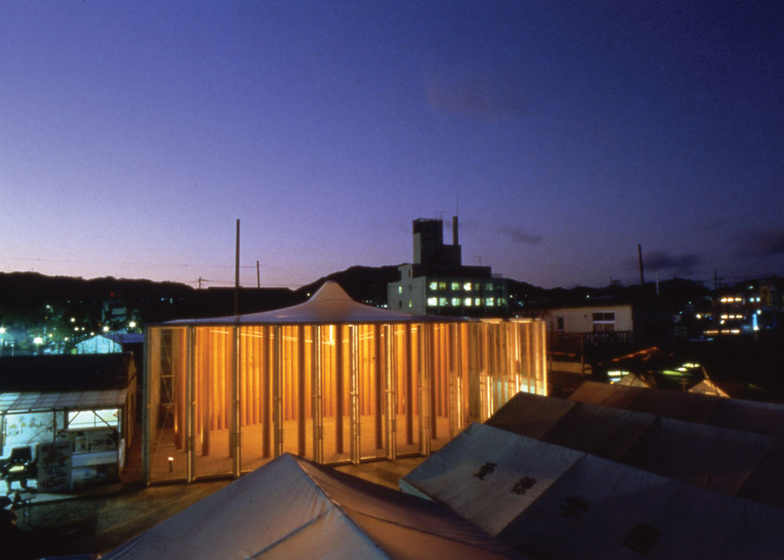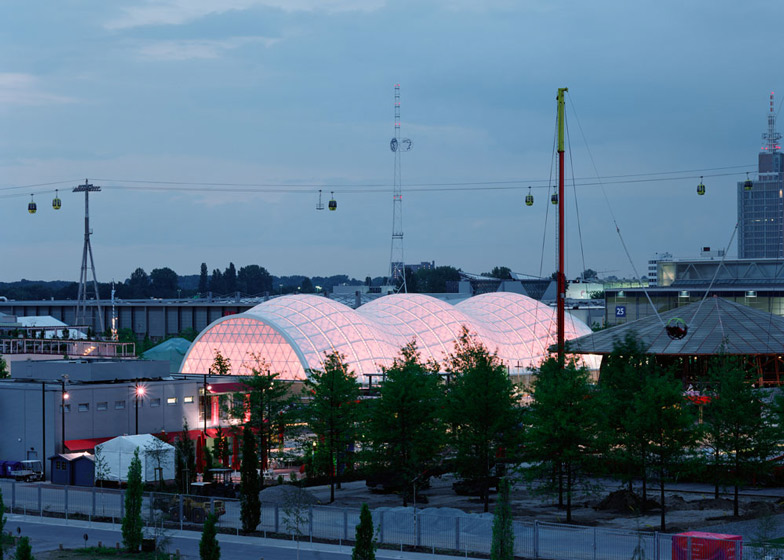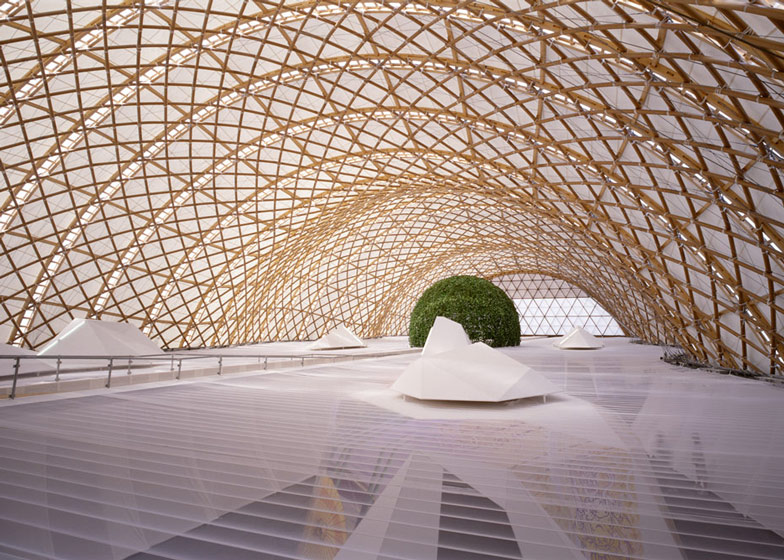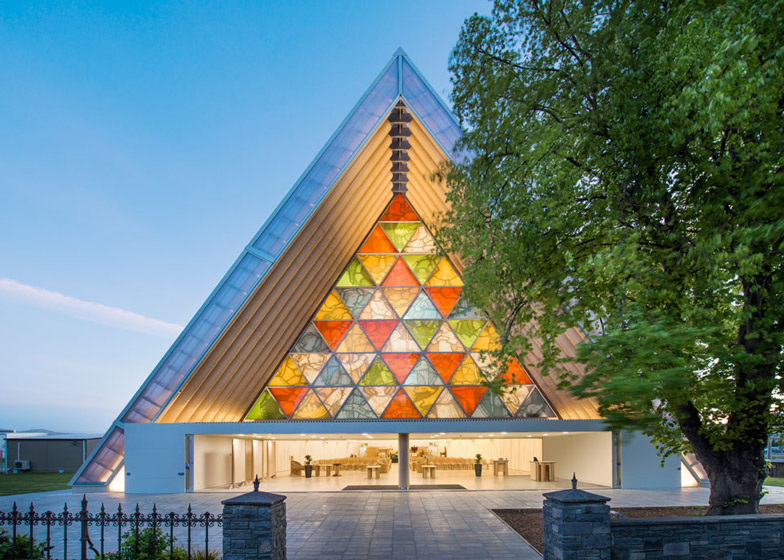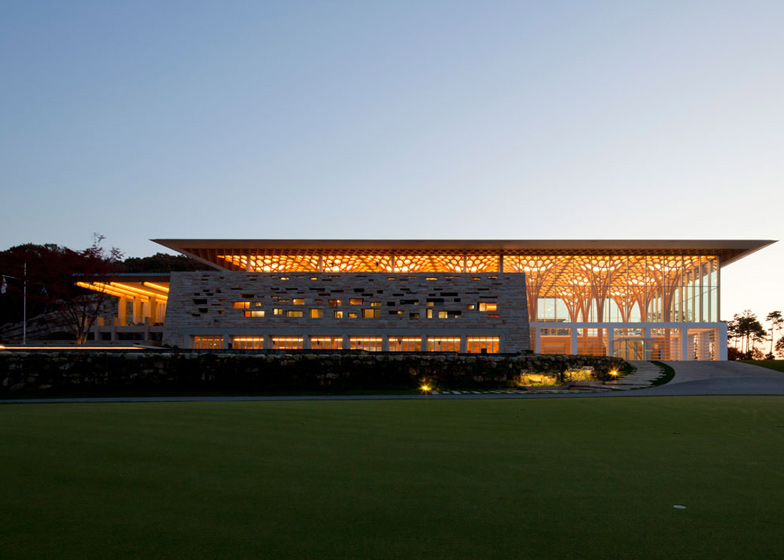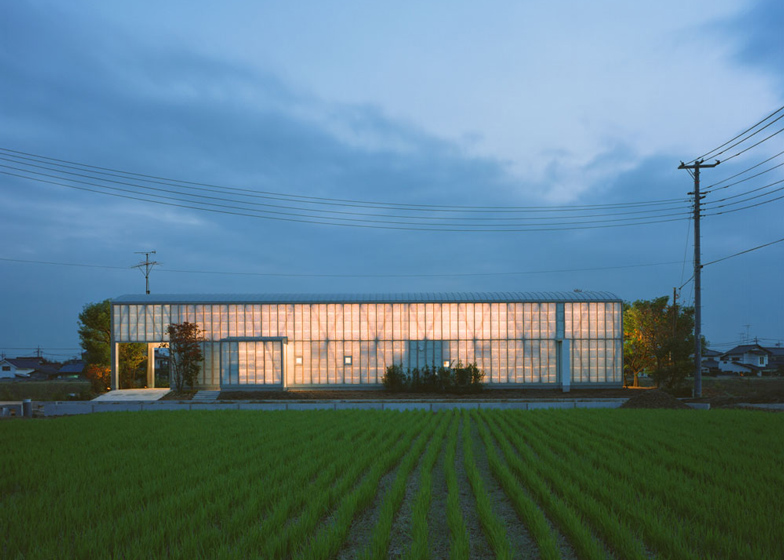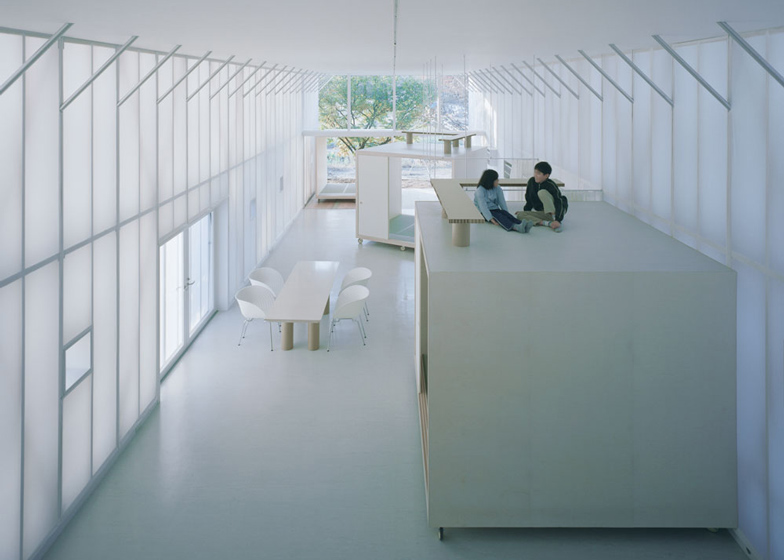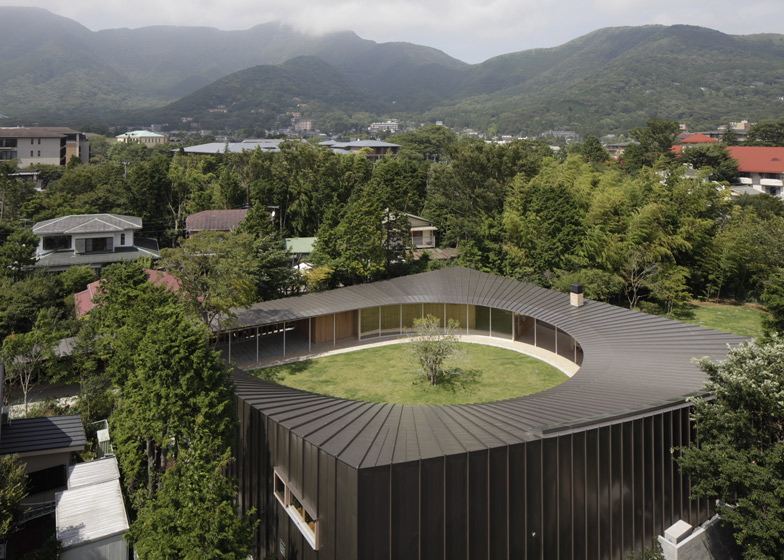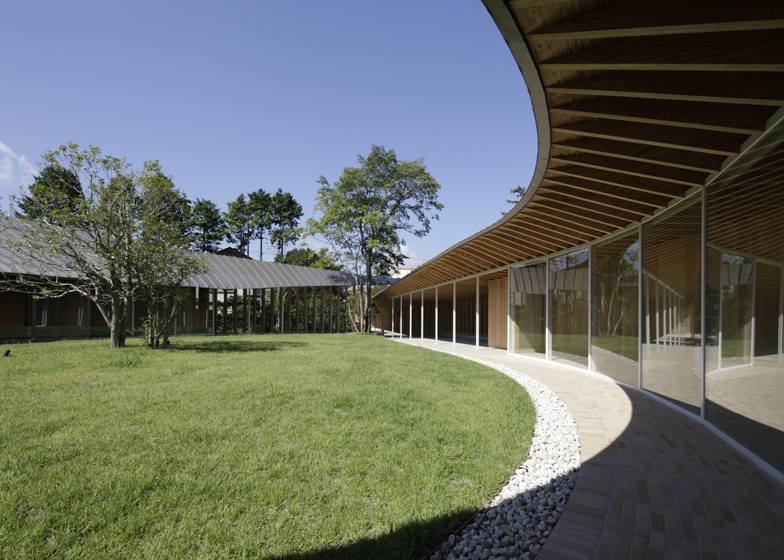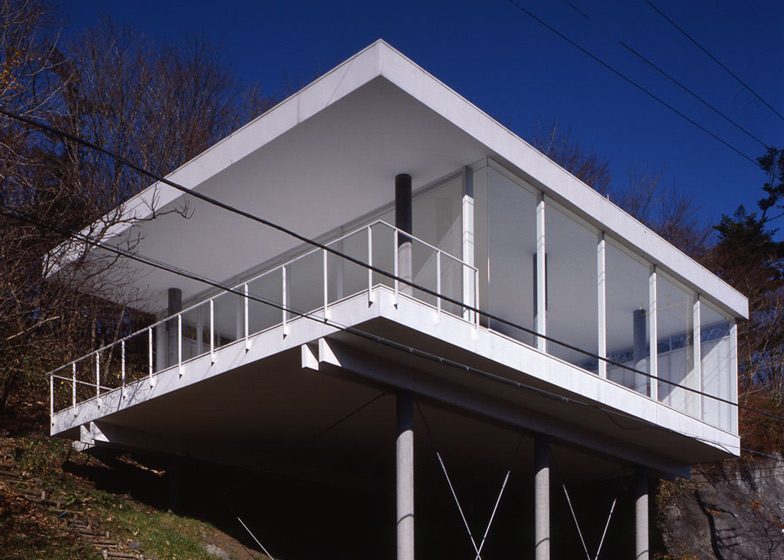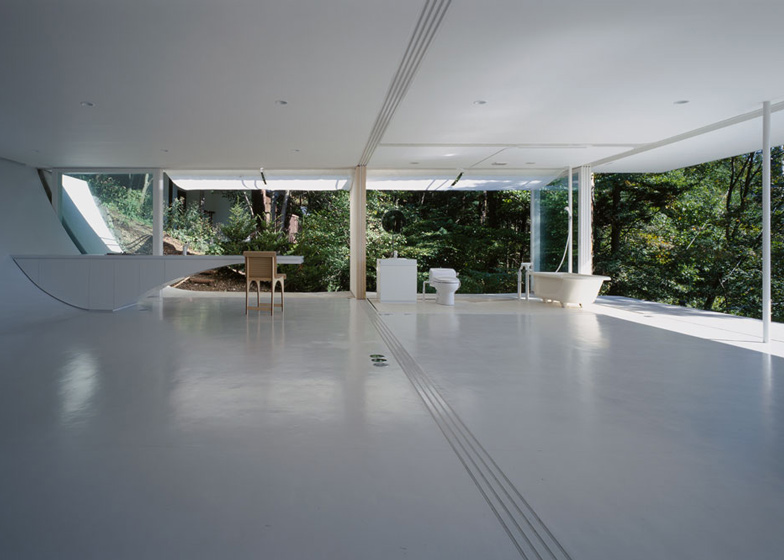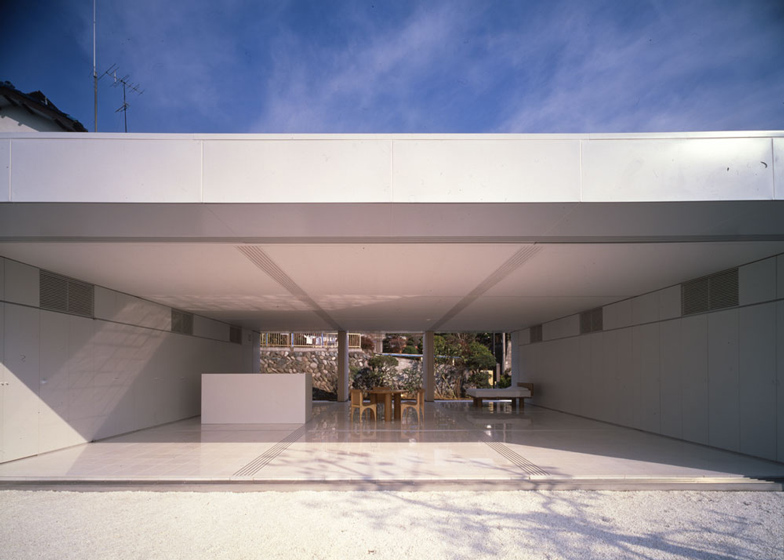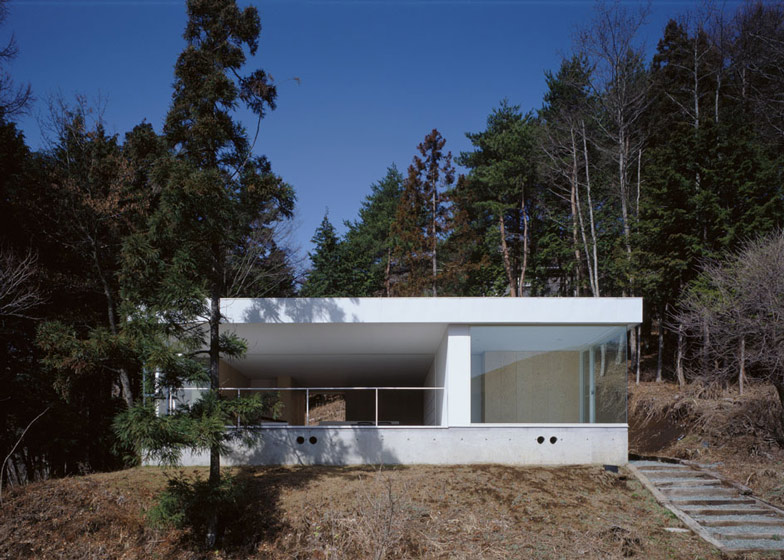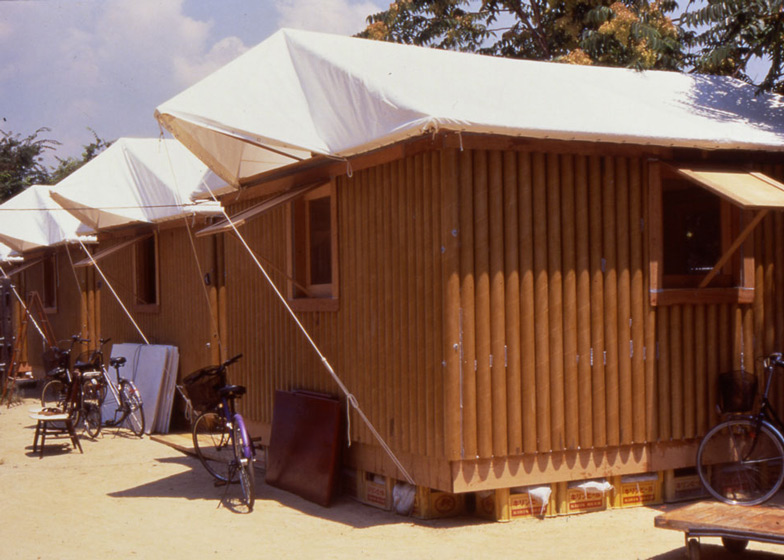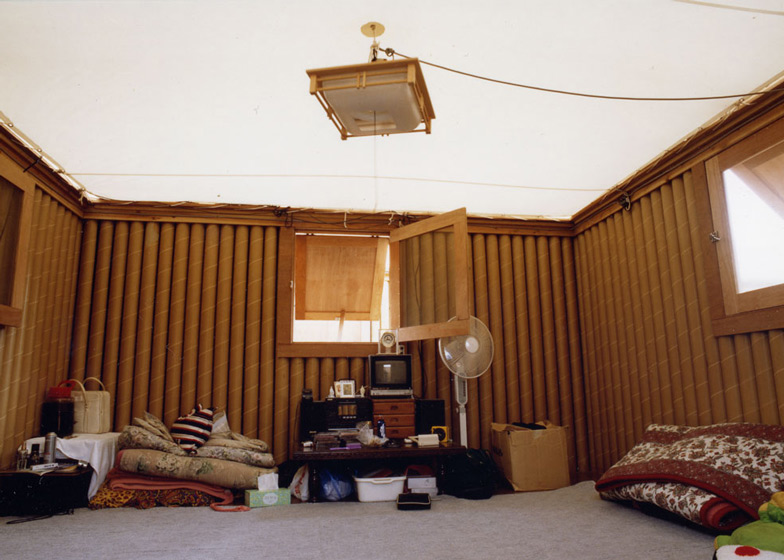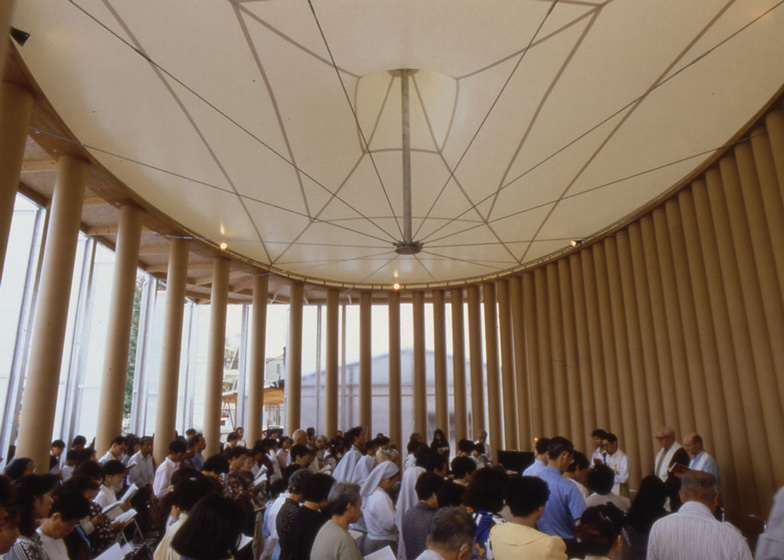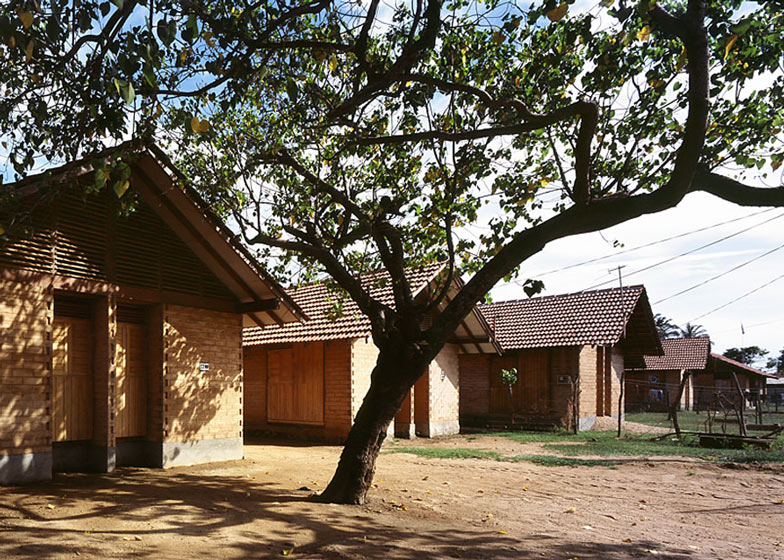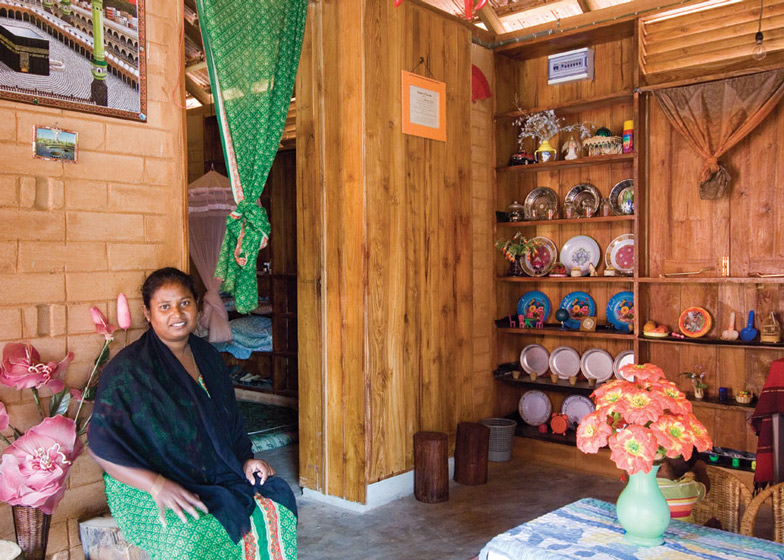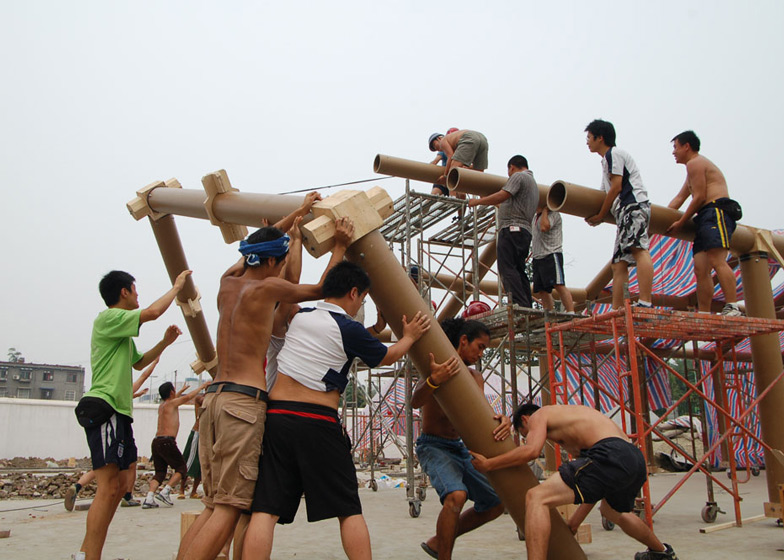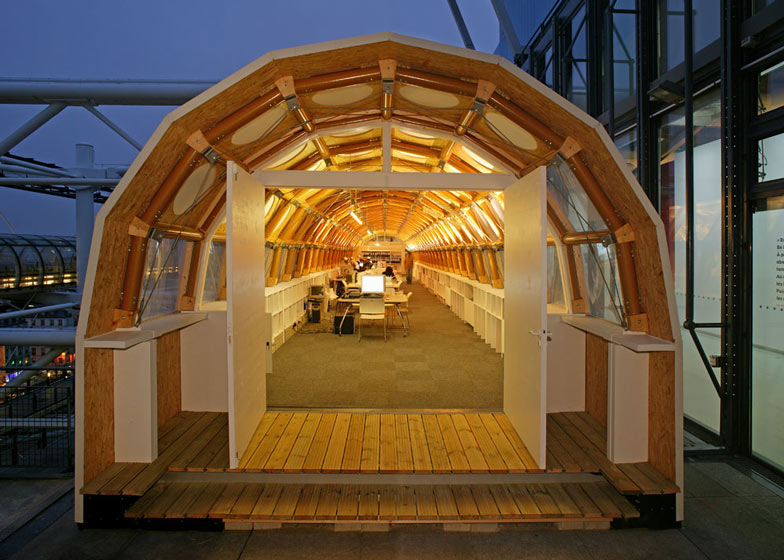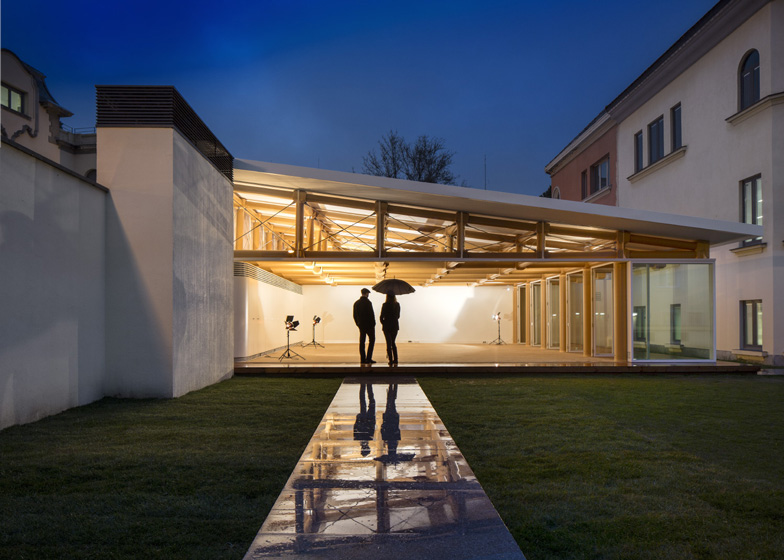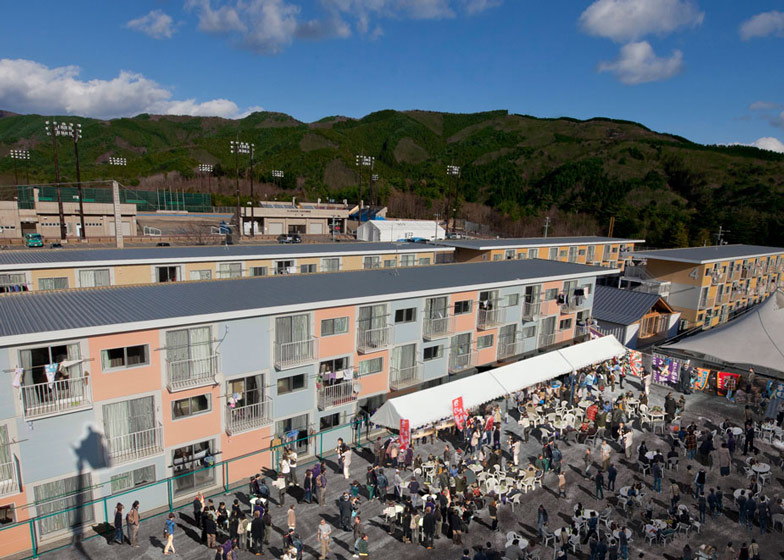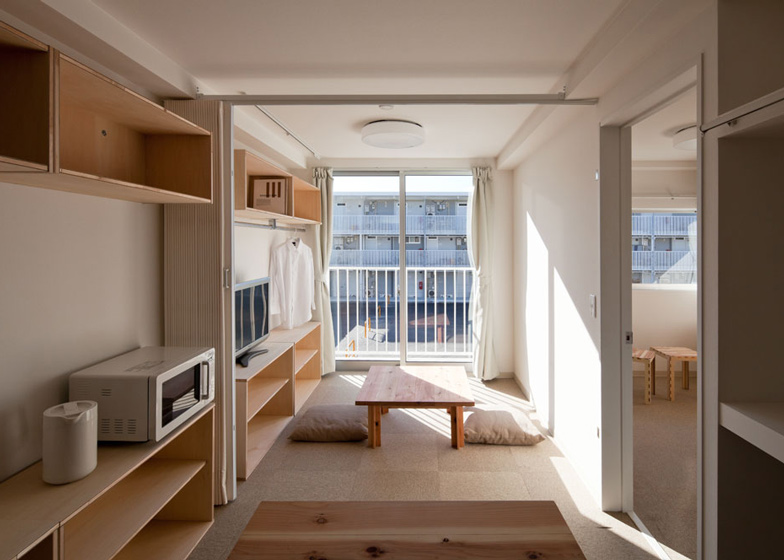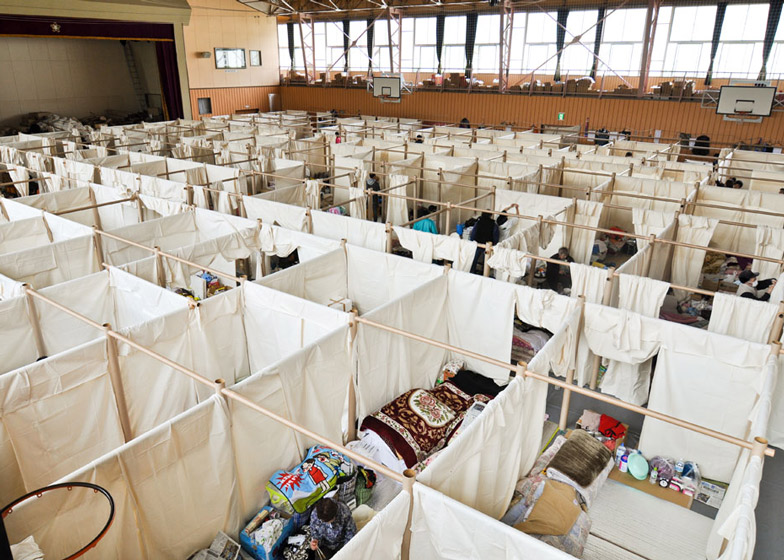Slideshow feature: following the news that Shigeru Ban will receive this year's Pritzker Prize, here is a look back at some of the buildings designed by the Japanese architect across his 30-year career.
Shigeru Ban has been experimenting with cardboard structures ever since he established his Tokyo studio in 1985. He has since used them in disaster relief projects around the world, from the Paper Log House and Paper Church (1995) built for Vietnamese refugees in Japan, to the Paper Refugee Shelters (1999) designed for Rwanda and the Cardboard Cathedral completed after the Christchurch earthquake (2013).
The architect is also well known for his inventive use of materials such as timber, bamboo, fabric and plastic, inspired by a childhood spent observing traditional Japanese carpenters. The roof of the Centre Pompidou-Metz in France (2010) features an undulating lattice of wooden strips, while Naked House (2000) has been praised for the way clear corrugated plastic clads its timber frame.
"When I started working this way, almost thirty years ago, nobody was talking about the environment. But this way of working came naturally to me. I was always interested in low cost, local, reusable materials," said Ban.
Other houses designed by Ban include House of Double-Roof (1993), which is raised up on stilts, Wall-Less House (1997), which is surrounded by sliding panels, and the sub-dividable Nine-Square Grid House (1997).
The architect was announced as the Pritzker Prize laureate last night, and will receive the $100,000 prize and a bronze medallion in a ceremony on 13 June in Amsterdam.



